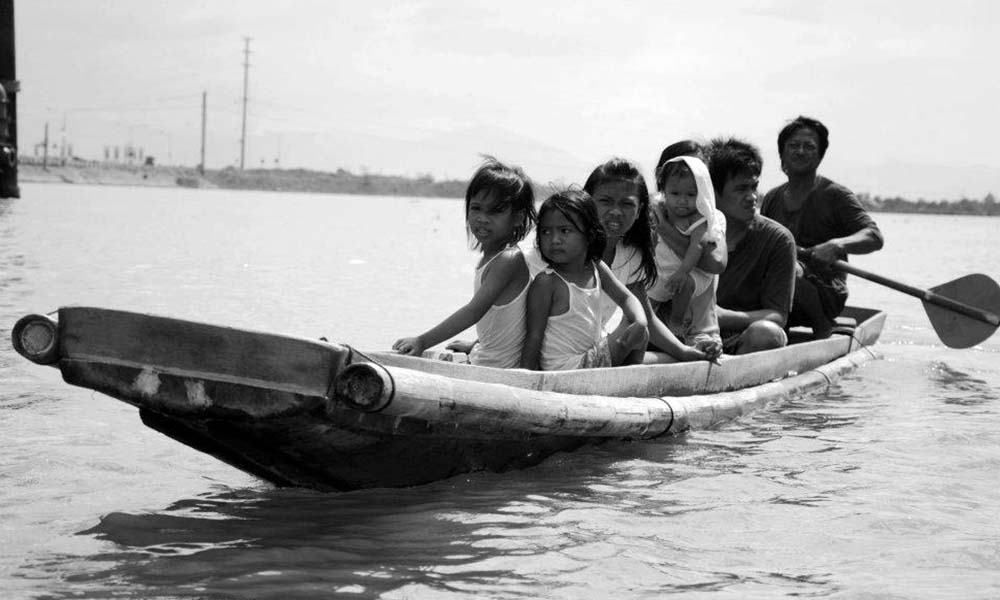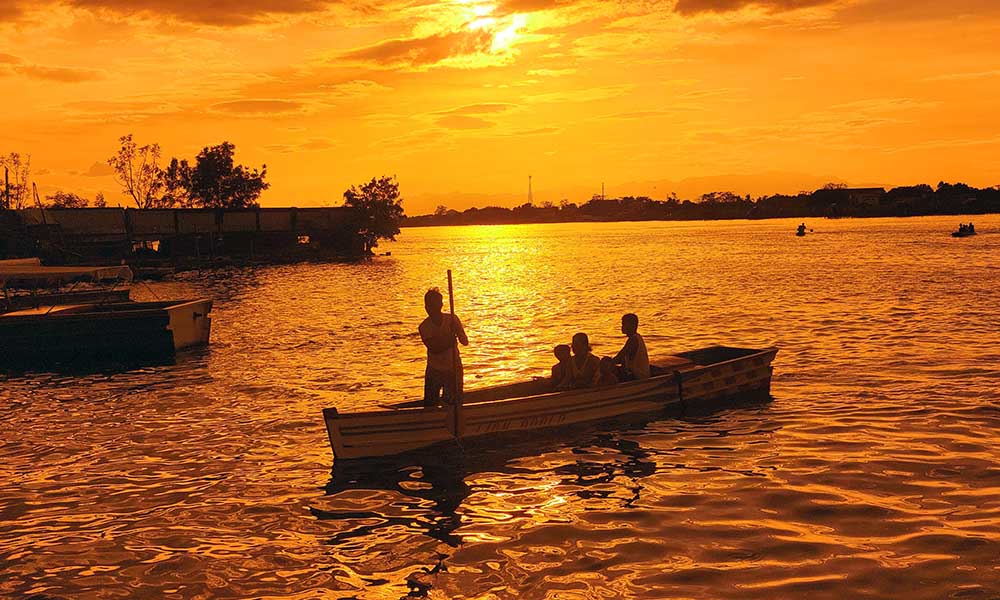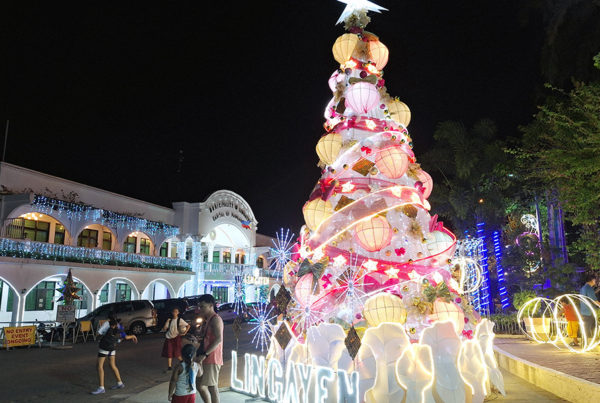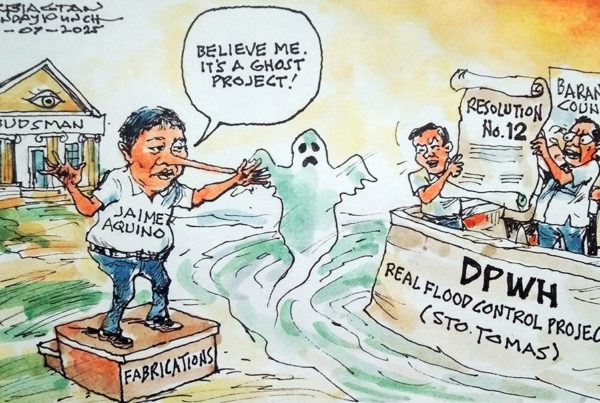
A boat ride to my boyhood barrio
(Photo by Willie Lomibao)
 By Rex Catubig
By Rex Catubig
THE recent groundbreaking for a new bridge to link the city to its island barrios and become the modern gateway to the Western towns, auger well for the Calmay residents who, for ages and generations, have ridden off the rough river of dream for its realization.
It has remained a pipe dream since my boyhood up till now my senior years. So, the plan for its start made my heart beat a thousand drum rolls and stirred my mind to gallivant in bygone years.

(Photo by Jojo Tamayo)
In the aftermath of the great flood of 1935 that swept under the Franklin Bridge that connected the barrio to the poblacion of Dagupan, Calmay was practically isolated. Which turned this little village of a few hundred residents into a miniature town in itself.
Its claim to fame, aside from the Colegio de San Alberto Magno that was subsequently demolished as a result of its damaged foundation due to the flood, is a bakery with a wood-fired clay dome: whose chimney heralded the beginning of the day as it emitted steamy smoke at the break of dawn and filled the cool morning air with the fragrance of hot pan de sal, and in mid-afternoon, the nutty aroma of pan de coco, and some other fancy-shaped bread like pan de atis.
On the span of the main road, a dry and wet market magically materialized in the dark of early morning hours and vanished in the bright glare of midday. It painted a colorful quilt of butcher-fresh meat, fresh catch of the day–shrimps, fish, shells–, cackling live chickens, vegetables in buksot, cooked food in caserolas, sticky rice delicacies laid out on green bamboo leaves lining a bigao, and other such native cakes. For five centavos, one could have a hot bowl of Nana Bianang’s pancit sabaw with its orangey shrimp broth, and a cup of Barako coffee in the barrio’s precursive version of Starbucks.
To complement the morning market, by the roadside were the rows of pakanan that served all-day menu and cook-to-order pancit guisado or con sabaw. Mama Bistre was the undisputed king of the makeshift, one table and a bench street carinderia –his adobo was the stuff craving was made of.

In addition, lining up the dusty gravelly road that traversed the barrio were garetas that sold rice sculpted into pyramidal mounds in wooden box containers; as well as kopras, babang, and emek which were staple feed for village livestock.
Canned goods like Emery corned beef, Portola sardines in oval can, Star margarine and other grocery items and sundry goods, occupy a place of honor in the back shelves. The one owned and run by Nana Pacing was without a doubt the barrio’s flagship store.
When there was no food for dinner, a quick run to the store saved a family from near famish.
The one big surprise, tucked in a corner by the riverbank, is the apothecary of Chinese immigrant Mama Ong, a small botica china where one could buy exotic medicine, liniments, and tsampoy. It was also the ultimate beauty counter where the barrio lasses got the popular chalky white pressed face powder in square box that transformed their barrio tan into urban porcelain complexion.
And oh yes, to complete the village package, there was also the lone doctor everyone called Dr Ging who did house calls. I had five stitches on my bloodied brow, after a head butt from a playmate, to forever remember him by.
Life in this little bucolic barrio named Calmay could not have been more complete and memorable.
( To be continued )










